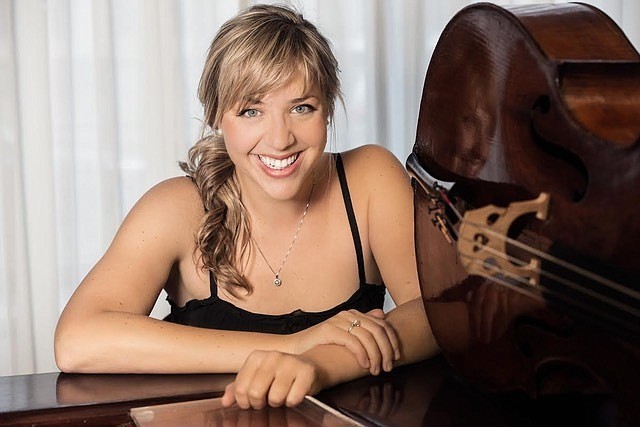- May 5, 2025
-
-
Loading

Loading

Sunday afternoon, Jan. 5, the Chamber Soirées Program of the Sarasota Orchestra presented something of a rarity: a full concert by the Sarasota String Quartet. Usually, this well-attended chamber music series presents several different ensemble combinations in each Holley Hall concert, but this one was devoted exclusively to the string quartet made up of Daniel Jordan, concertmaster; Christopher Takeda, associate concertmaster; Rachel Halvorson, principal viola; and Natalie Helm, principal cello.
Daniel Jordan, in his excellent commentary on the concert, noted that the works programmed were from three centuries — the 18th, 19th and 20th — and all were composed in minor keys, adding to this unusual juxtaposition.
The concert opened with Haydn’s String Quartet in D Minor, ob. 76, No. 2, also known as “The Fifths” quartet. Haydn is generally accepted as the primary developer of the string quartet, given the 68 he composed during his lifetime. This quartet opens with the theme stated as a series of “falling fifths, “ passing from the first violin through the other voices of the quartet, and elaborated on throughout the movement. The blend and ensemble of the group shown forth from the very beginning, as did their enthusiasm for the music.
The theme and variations of the second movement and the minuet of the third led to a thrilling finale, oddly enough still in a minor key, rather than changing to a major key in the traditional fashion.
The middle piece in this musical sandwich was the 1905 quartet of Viennese composer Anton Webern. It contains moments of both late Romantic writing and atonal passages. It was written during his student days, before he became a convert to the atonal school of his teacher Arnold Schoenberg. Webern’s quartet is built on a three-note motive, which is passed around the four players in various forms, given various fugal treatments, and then expands in other directions.
Oddly enough, various dissonant and atonal passages resolve into tonal harmonies, and then a bit later these same tonal harmonies resolve into dissonant ones with no tonal center. All of which could be very disquieting if carried to excess — but they weren’t. New themes would be introduced and then there would be long passages of unison playing, almost as if Webern were experimenting with this piece.
Yes, this is “cerebral” music, but as performed by these excellent musicians, it was not the least bit off-putting. I overheard a comment saying that it could be excellent music for an outer space movie, and perhaps so.
Webern seemed to love the rather cloudy sound of muted strings, which, added to post-Romantic harmonies, gave a “hazy spacey” feeling to the entire second movement of this most interesting quartet.
Ending the concert was an outstanding performance of Beethoven’s String Quartet No. 11 in F Minor of Opus 95, the first of many performances honoring the 250th anniversary of this composer’s birth. This quartet was subtitled “Quartet serioso” due to the minor key setting and also likely due to the health issues being faced by Beethoven at the time. Like his Fifth Symphony, composed a few years earlier — and also the Webern quartet — a small motive sets the tone and pace for the first movement.
Beethoven modifies and shares this motive throughout the quartet of players and keeps the movement moving ahead in a most direct fashion, with the five notes of the motive always somewhere in the background.
Keeping up the surprises, Beethoven inserts a sprightly fugue in the second movement and an unconventional Scherzo and trio in the third, leading to a sprightly finale. A most unexpected Presto coda in a major mode, with notes flying everywhere, brings the work to a most joyful end.
Each of the four players in the quartet contributed to a musical whole that was much greater than the sum of its parts, giving us a late afternoon of outstanding music making. The capacity crowd awarded these fine players with a well-deserved standing ovation.